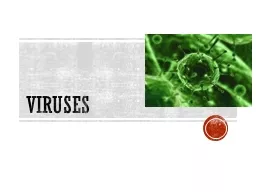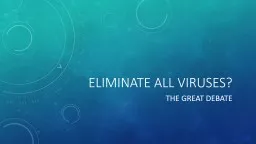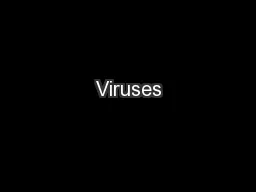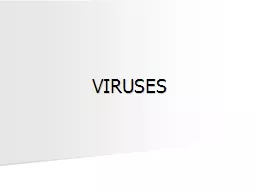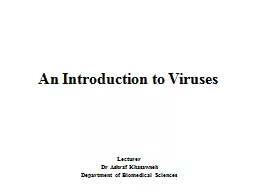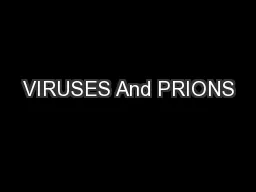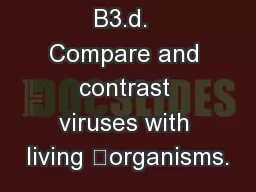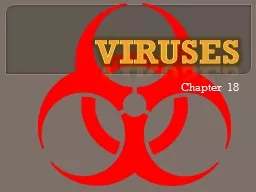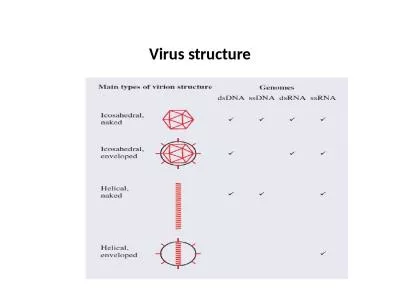PPT-Viruses What is a virus?
Author : garcia | Published Date : 2022-06-15
Viruses are not alive A virus in an obligate intracellular parasite Requires host cell to reproduce Can be seen at magnifications provided by the electron microscope
Presentation Embed Code
Download Presentation
Download Presentation The PPT/PDF document "Viruses What is a virus?" is the property of its rightful owner. Permission is granted to download and print the materials on this website for personal, non-commercial use only, and to display it on your personal computer provided you do not modify the materials and that you retain all copyright notices contained in the materials. By downloading content from our website, you accept the terms of this agreement.
Viruses What is a virus?: Transcript
Download Rules Of Document
"Viruses What is a virus?"The content belongs to its owner. You may download and print it for personal use, without modification, and keep all copyright notices. By downloading, you agree to these terms.
Related Documents

